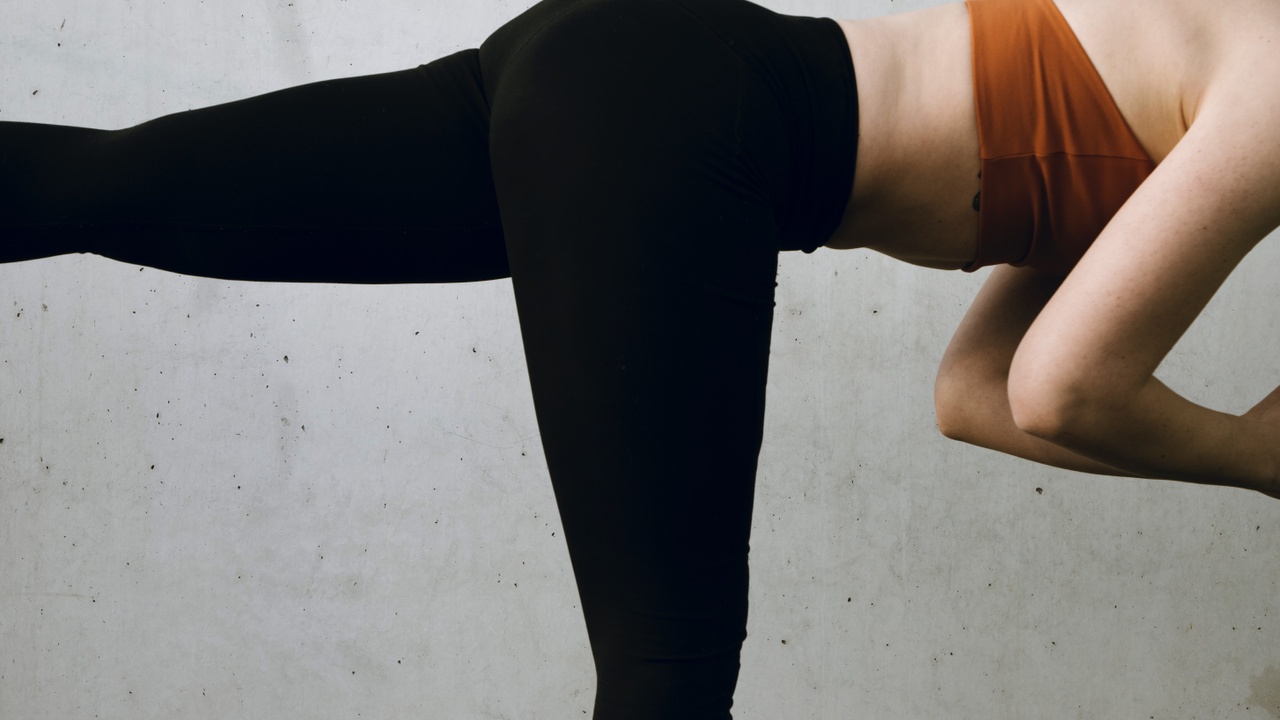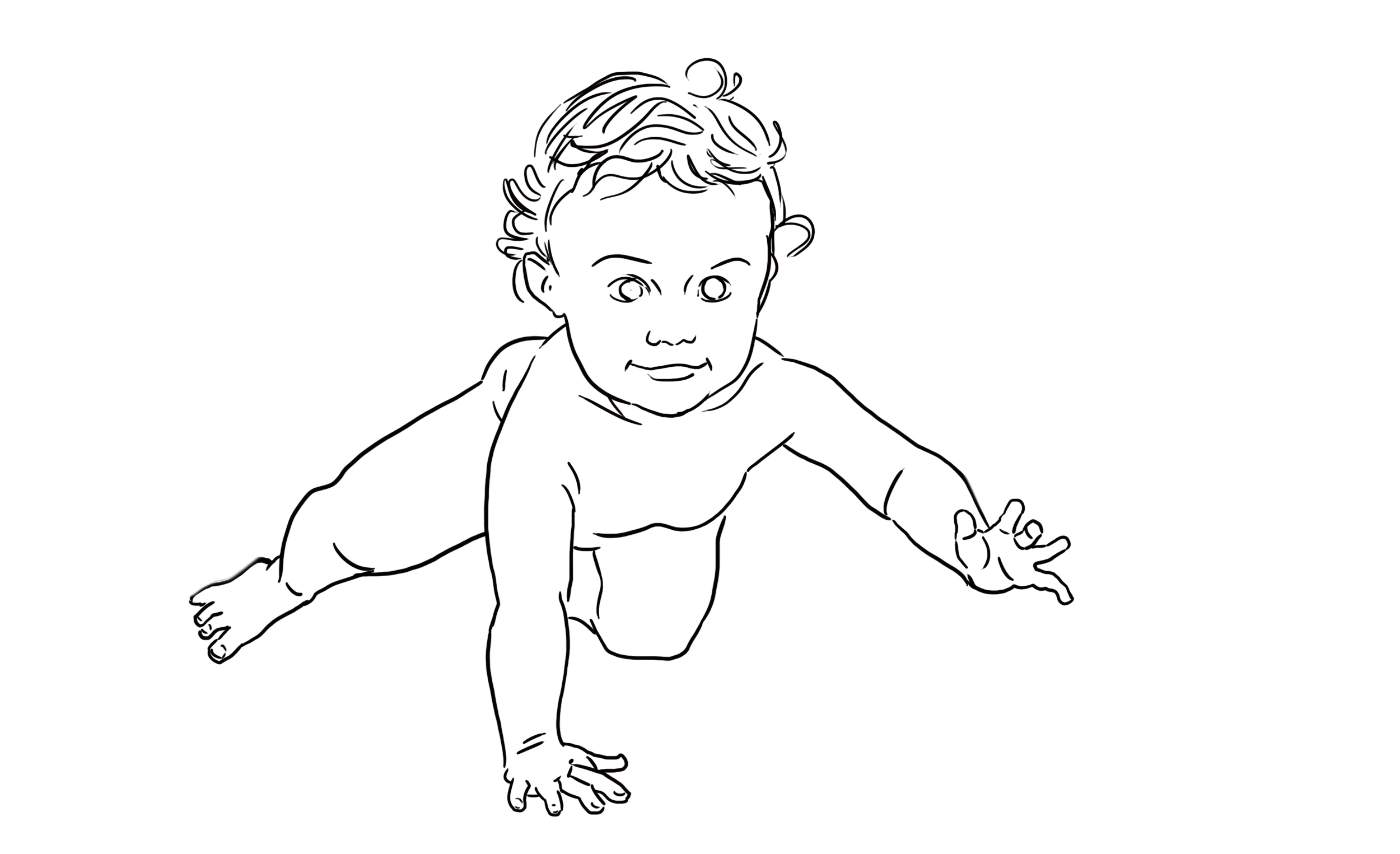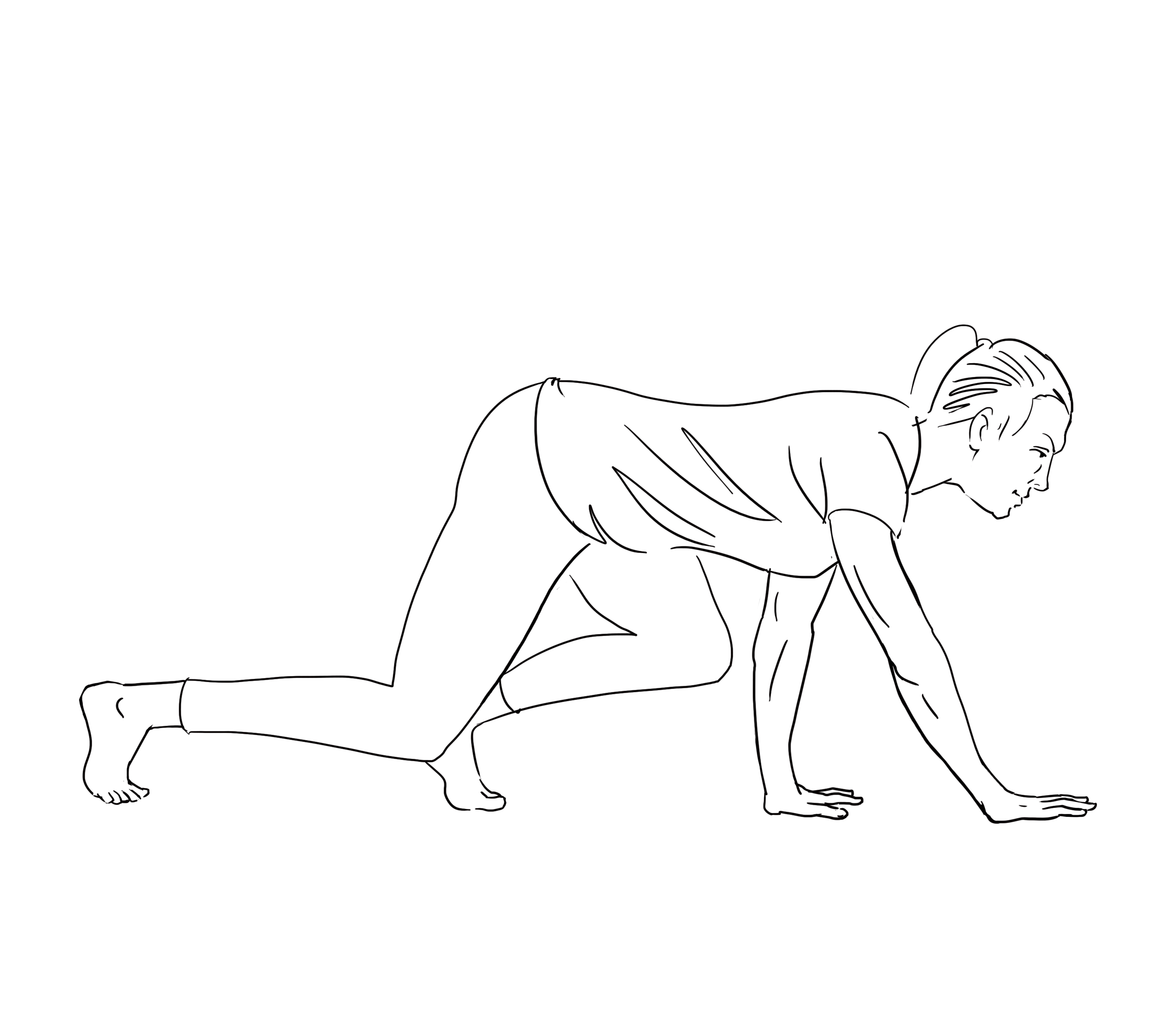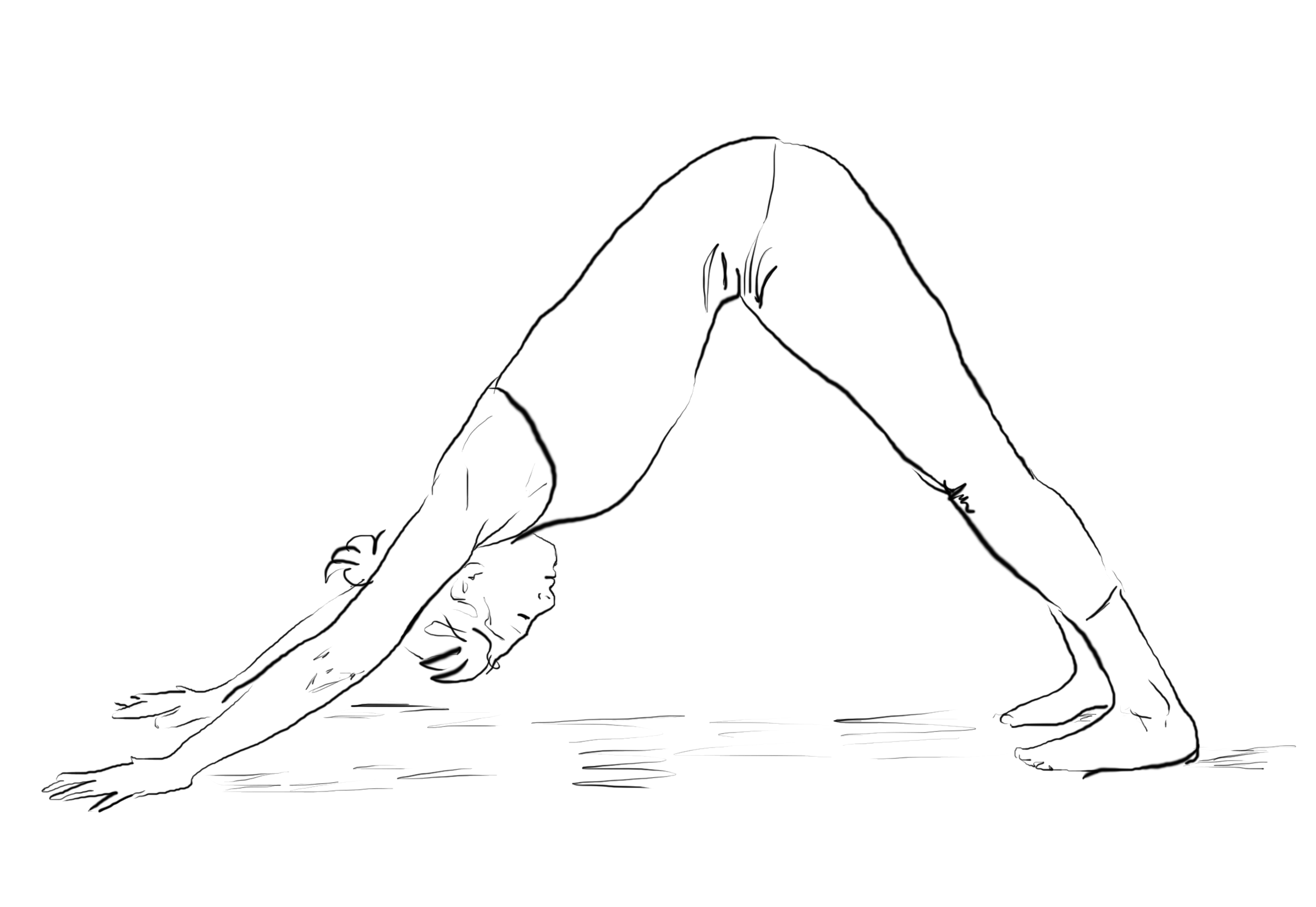Left-right, right-left
Jun 17, 2022
How we can strengthen neural and physiological responses through cross-lateral connectivity practises…
If you’ve ever tried patting your head while rubbing your belly, you’ll have experienced cross-lateral (CL) connectivity: simultaneous, asymmetrical movement. This requires left-right brain integration; both hemispheres of the brain working symbiotically. In the example of head-patting and belly-rubbing, the CL movement is a limb from one side doing something different to those on the other side, but it can also include any movement that crosses over the midline, such as right hand touching left knee. In terms of yoga, this could be seen as another level of ‘union’, where body, breath and mind are drawn to centre.
Cross-lateral practises keep our neural pathways firing off, equally mapping across both directions. Where the movement pattern is familiar, it may feel smooth and integrated, but if it’s new and unfamiliar, practice and focussed attention may be necessary to get the flow and to be able to swap from one side to the other as new pathways awaken that easily atrophy if not used. These mismatched movements which defy expectation draw clear attention to our bodies, demanding focus to be executed with even basic skill, let alone grace.
Such exercises have long been included in therapy programmes for physical rehabilitation and to support brain and learning capabilities for adults and children, but scientific data remains elusive as neuroscientific research is still in its infancy. Modern science is more reticent about confirming the validity of cross-lateral movements in the field of brain-training and learning development despite the fact that ancient physical, meditative traditions such as yoga, t’ai chi, qigong and martial arts all include such focus-training movements as part of the toolkit for honing embodied awareness and clarity of thought. T’ai chi includes many cross-lateral movements and has been proven to reshape the patterns of brain structures and functional connectivity[1]. The high degree of awareness and focussed attention needed to follow such movement patterns with effortless precision has shown to increase volume of cerebral cortices in t’ai chi practitioners[2].
The cerebral cortex is the outer layer of the brain which is attached to the corpus callosum (CC), the thick band of nerve fibres bridging the left and right hemispheres. Both play roles in how our somatosensory nerve cells respond to changes to the surface or internal state of the body, so include our sense of touch and proprioception – how we sense our position and movement in space[3].
What is known is that left-right brain communication matters for full cognitive function. Developmental diseases and abnormal information processing (such as autism and schizophrenia) have been linked to a ‘dysfunctional integration among neural systems’[4], suggesting that optimal balance between the hemispheres is vital. The advancement of imaging techniques revealed a condition called agenesis of the corpus callosum (ACC), where those with underdevelopment in this bridge between right and left hemispheres experience intellectual disability, seizures, feeding problems, developmental delay, cognitive problems, learning difficulty and poor motor coordination[5]. Supporters of systems like Brain Gym[6] claim that exercise sequences including cross-lateral movement increase learning capacity in children.
Integrating subtle body self-study
The assertion that the right brain is more creative and the left brain more analytic has never been confirmed by neuroscientists, but we do know that the different hemispheres have different function and need to work together for both cognition and movement. Very simplistically it is believed that the left brain is better with familiar movements, but the right brain is more adept with new things, and they switch over dominance continually.
Yogis have long worked with these ideas and the need for right-left body integration, most notably in alternate nostril breathing (Nadi Shodhana Pranayama). Again, any links to male/female energies, colours or character traits etc are more poetic perhaps, esoteric body psychology guides to self-study rather than absolutes. But the concept of integrating Ida and Pingala nadis, the left and right channels of the subtle body, the pranamaya kosha, around the sushumna, the central nadi, is as pertinent a guide as ever, correlating to the theory of right-left brain stimulation and the ultimate ‘union’ of yoga.
A study using EEG (electroencephalogram) to track brain activity, showed that when breathing through the right nostril is dominant, activity is greater in the left cerebral hemisphere[7]. As each hemisphere of your brain controls the opposite side of the body, this showed what yogis have long attuned to; when nostril dominance switches, so does the activity of the brain and body. Another study observed that this practice ‘positively influences cognitive processes which are required for sustained attention’[8] (See the practice below).
Rediscovering primal movement
Our first cross-lateral movement is crawling as this requires opposite-limb movement – right leg with left arm and vice versa. This is a big evolutionary shift from belly crawling which moves bilaterally, leg and arm from the same side together. It’s a new developmental phase as prior to this, the right side of the brain controls the right, and the left side, the left side of the body. Crawling builds bridges across the two, allowing information to pass freely across the corpus callosum and coordinate our spinal muscles and bodily movement up to standing and walking. Without this development, we could only move awkwardly with the same side jutting forward together and no relationship across diagonal lines of the body. Babies who do not crawl may well find other cross lateral methods to create this effect[9].
Whether you crawled or did not, this movement is highly useful to replicate primal movement (from which we evolved) and undo any disorganisation through nerve impulses that can result from trauma, shock, or damage from conditions like strokes or development issues in early life. Neural plasticity means we have the capacity for new organisation by growing new nerve pathways through repetition at any time of life.
Moving beyond sedentary patterns
 Patterns that we often adopt in modern life commonly lack the level of whole-body physical movement that keeps left-right brain integration firing. Most of us use our arms separately to our lower body in an average day, let alone lifting, building, climbing or throwing anything to any great extent like our ancestors would have done. All cross-lateral movements can help us regain natural movement and find ease in navigating how we move through life with grace, but can also be of particular benefit to those experiencing:
Patterns that we often adopt in modern life commonly lack the level of whole-body physical movement that keeps left-right brain integration firing. Most of us use our arms separately to our lower body in an average day, let alone lifting, building, climbing or throwing anything to any great extent like our ancestors would have done. All cross-lateral movements can help us regain natural movement and find ease in navigating how we move through life with grace, but can also be of particular benefit to those experiencing:
- Lack of coordination
- Poor balance control and associated vestibular conditions such as vertigo and nausea
- Difficulty reading
- Learning disabilities, such as dyslexia
- Coordination issues, such dyspraxia
- Clumsiness and poor spatial awareness
- Stuttering
- Saying things backwards or spoonerisms – swapping words in sentences
- Sports and other injuries that require re-learning of motor skills
Not just for babies
Practising crawling around the floor and getting back in touch with your inner baby is hugely beneficial for both body and your brain. The left-right brain integration that this promotes, helps us make decisions that sit comfortably between rational and emotional responses, the best balance of coming from heart and head. Starting the day, or any fitness warm-up, with this movement helps move the spine in a lateral undulation – a side-to-side wave more like the spinal motion of our distant fish ancestors – which frees up our ribs, hips, shoulders and neck, as well as the spine.
Crawling #1:
- Start knees down (like the baby in the picture) and simply experience reconnecting mindfully with a movement that is still in your unconscious patterning.
- Let your spine, hips and shoulders move as they need to find a rhythm, bringing the left arm forward as the right knee propels that leg forward. Knees down means they need to move further out to come forward, rotating the hips outwards to bring the leg up.
 Crawling #2:
Crawling #2:
- In this ‘older baby’ version, with the knees further under the hips, the knees and hands swing forward closer in towards the mid-line.
- Keeping the hips and core central is sometimes called the leopard crawl. Like a four-legged mammal, this movement has less sway from side-to-side and therefore more efficient, but don’t miss out stage one, which loosens tissues ready for this more muscular version.
If you feel self-conscious crawling or even find it too physically challenging, just think of the low crawl for stealth soldiers are trained to do. This replicates the strength that babies need to change their movement capabilities so profoundly: cross-body connection, connecting upper and lower parts of the body, getting power from the ground, through the hips and the armpits. These patterns can also be seen in rock climbing, swimming and even running and walking; crawling is a great loosening exercise for all of these activities. You’ll also feel they also benefit other cross-body movements such as throwing and swinging a racquet or bat.
Expanded cross-lateral movements
Taking these patterns into stronger motions where we hold the body up from gravity adds in a dimension of spatial and postural awareness. Most effective movements and sequencing include a mix of our whole range of reaching motions, as well as side-to-side connectivity to continually challenge our sensory perception and hone our motor skills for balance, precision and awareness. In this way they, encourage focus and whole brain functioning, but also spare us energy used up when the body is continually dealing with a sense of disorganisation and confusion about its current position in space.
Except for the sunbird and tiger poses here, all other postures are continually moving. Rather than just rushing through them and using momentum to direct movements, slow down to a pace where you can feel each part of the journey and you can drop into a rhythm with steady breath and full exhalations. This keeps your nervous system from becoming over-excited, so even if your heartbeat becomes raised, your brain isn’t registering the movement as a stressful event where beneficial new pathways are less easily formed. Slower movements require more precise control, which more effectively stimulates brain reorganisation.
Sunbird pose
 After crawling, come back to all fours and feel secure on the ground, wrists under shoulders, knees under hips.
After crawling, come back to all fours and feel secure on the ground, wrists under shoulders, knees under hips.- Find a steady gaze fixed on a spot forward and down so your neck is long at the back and sides, but you are prepared to balance.
- Take your right leg back behind you with the foot flexed and toes pointing to the ground, so that the hips remain parallel.
- Reach the left arm forward – palm in towards the midline – and reach back to feel long from the front fingers to right heel, drawing up the belly to support where top and bottom body meet.
- Hold the pose for as long as your breath can stay easy and allow the combination of CL activity and balance to register in a calm nervous system.
Bridging through symmetry
 Between cross-lateral movements, coming back to symmetry can help the brain reorganise and assimilate the effects. If you are familiar to yoga, you can do a downwards-facing dog pose or any bi-lateral stretch that feels intuitivet.
Between cross-lateral movements, coming back to symmetry can help the brain reorganise and assimilate the effects. If you are familiar to yoga, you can do a downwards-facing dog pose or any bi-lateral stretch that feels intuitivet.
Cross-lateral arch and curl
 Laying on your back with knees bent, place your feet on the ground, hip-width apart and interlink your fingers loosely behind the back of your head.
Laying on your back with knees bent, place your feet on the ground, hip-width apart and interlink your fingers loosely behind the back of your head.- Lift the right knee in towards the right side of the chest, while lifting the head up off the ground with the hands to move the left elbow in an arc towards the right knee.
- Depending on your core strength, you can either keep both hands behind the head or support the lifting leg with the hand on the same side (as pictured).
- Move slowly from side to side, allowing the breath to stay fluid.
- Rest when needed and stop before exhaustion.
Cross-lateral locust pose
After engaging the abdominal muscles in the cross-lateral arch and curl, this posture will lengthen them.
 Lie on your front in a star shape, forehead to the floor.
Lie on your front in a star shape, forehead to the floor.- Simultaneously lift the right leg and left arm from the centre of your body. Lift the head only in line with the height of the lifted arm, lifting the breastbone rather than the chin.
- Exhale to drop fully into the ground, then inhale to the other side, moving across the diagonal on each in-breath.
- Rest and breathe into the belly when you feel in any way tired.
Standing cross-crawl
Standing takes cross-lateral activity into the full human bilateral phase, as the endpoint all of our development is heading for. In these exercises, finding your full range of motion – ie how high you lift your leg and arms – is most engaging for brain development as it creates most challenge and the storing of new and most effective modes.
- Standing, feet hip-width apart, breathe to feel a sense of grounding.
- Simultaneously lift the right knee and the left arm, then bring both down together to their starting position.
- Lift the left knee and right arm, then release.
- Alternating movement from side to side, focussing on synchronised movement of limbs.
 After re-grounding, now take the movement across the midline, as you lift one knee bring the elbow of the opposite arm to meet it as close as you can.
After re-grounding, now take the movement across the midline, as you lift one knee bring the elbow of the opposite arm to meet it as close as you can.- The other arm can lift to where it feels comfortable for your range of motion and balance.
- Move side to side as before, focussing on quality of movement.
- Do as many of these motions as you can without tiring or before any intensity where your heart is racing. This is about new brain pathways, not a high- intensity workout.
Cross-lateral breathing – Nadi Shodhana Pranayama
Traditional alternate nostril breathing involves hand manipulation of the nostrils to restrict breath, but a visualised version (without a mudra) can have a similar effect by continually shifting our attention from left to right. You can do this sitting or lying, but if staying upright, ensure a comfortable uplift for the spine, sitting on a chair if you need and lifting up from the back of the head to draw the chin lightly into the throat.
- Settle into your breath, feeling its effects into your belly.
- Imagine yourself inhaling through just the right nostril and exhaling through the left, then inhaling through the left and exhaling through the right. Then move from side-to-side so you exhale, then inhale at the same nostril.
- Keep the eyes and jaw soft, practicing for a few minutes to starting and building to 5-10 minutes if you can remain feeling relaxed and calm.
- After finishing stay lying or lie down for 5-10 minutes to assimilate the effects.
Cross-lateral Mudra – Sa Ta Na Ma
This moving mudra (hand seal) which is practised in Kundalini yoga with the mantra Sa Ta Na Ma, can be used to focus attention as well calm and focus the mind. Utilising the mantra that derives from ‘Sat Nam’, meaning ‘my true nature’, we are pointed towards our essence, that which lies beneath the conditioned layers of behaviour, identity and patterning of consciousness.
By crossing the hands as we bring the thumb tips sequentially to each fingertip demands deep concentration and integrates the brain. Traditionally the mantra is expressed through singing, whispering and silently, but we can discreetly use this hand gesture, focus and the internal mantra at any time or place where we feel out of balance or ungrounded.
- Sit or stand comfortably, spine light, breath fluid.
- Cross the wrists with the palms facing up.
- Touch the thumb tips to the index fingers with the mantra ‘Sa’ (meaning birth, the beginning, infinity)
- Move the thumb tips to the middle fingertips with the mantra ‘Ta’ (life, existence and creativity manifesting from infinity).
- Lightly move the thumb tips to the ring finger tips with the mantra ‘Na’ (death, change and transformation).
- Finally move the thumbs to touch the tips of the little fingers with the mantra ‘Ma’ (this symbolises regeneration, rebirth, consciously experiencing the infinite).
- Repeat slowly and steadily, either silently, out loud or, if time and space allow:
- 1 minute aloud
- 1 minute whispered
- 2 minutes internally
- 1 minute whispered
- 1 minute aloud
- Rest seated or in Savasana, paying attention to the breath, the vibrational quality in the body and the feeling of returning to centre.
Charlotte's Whole Health platform offers a range of classes, supportive materials, natural health webinars, meditations, health supplement discounts and much more. Click here for further info.
[1] https://pubmed.ncbi.nlm.nih.gov/24860494/
[2] https://journals.plos.org/plosone/article?id=10.1371/journal.pone.0061038
[3] https://direct.mit.edu/jocn/article-abstract/13/8/1071/3590/Posterior-Corpus-Callosum-and-Interhemispheric?redirectedFrom=fulltext
[4] https://www.nature.com/articles/nrn1849
[5] https://pubmed.ncbi.nlm.nih.gov/20849621/
[6] https://braingym.org.uk/
[7] https://europepmc.org/article/MED/6874437
[8] https://bpsmedicine.biomedcentral.com/articles/10.1186/1751-0759-7-11
[9] https://onlinelibrary.wiley.com/doi/abs/10.1111/j.1365-2214.1984.tb00189.x




